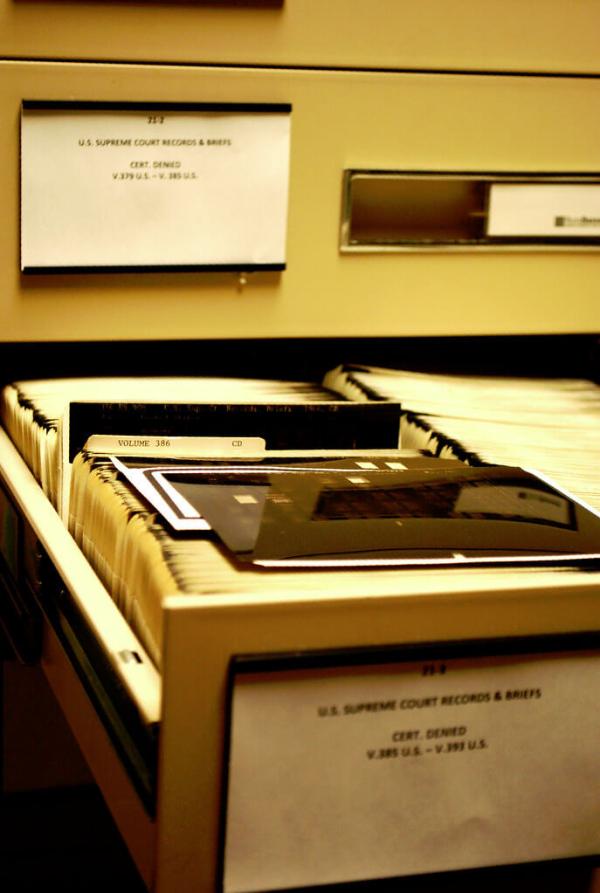
In the legal industry, printing is an essential part of the workflow — lawyers and staff print out multiple documents every day. However, frequent handling of confidential information during the printing process poses significant security risks that can lead to disastrous consequences for business owners. Unfortunately, printer security is often ignored until the consequences of such risks take effect.
To ensure the confidentiality of printed documents and maintain the integrity of business operations, it is essential to understand printer security and its importance in the legal world. Investing in robust printer security measures can help your business protect sensitive information, comply with regulatory requirements, and uphold ethical standards.
At STPT, we have over 40 years of experience dealing with printers in various industries. We believe secure printing solutions are vital for any business owner who wants to maintain the health of their company. Our comprehensive article covers the essential components of printer security, implementation strategies, legal environments that benefit from it, recommended security options, and the severe consequences of neglecting it. Let’s delve deeper.
What Is Printer Security?
The question that must be asked first and foremost is: What is printer security? To summarize, it’s a combination of multifaceted measures to shield printers, multifunction devices, and printed documents from unauthorized access and breaches. Printer security can have varying meanings depending on the industry or environment. However, certain components can be applied to any business.
Here is a list of some of these components:
- Access Controls: Restrict access to printers and multifunction devices to authorized users only, and implement authentication methods such as PIN codes, smart cards, or even biometrics.
- Encryption: Ensure that data transmitted to and from the printer is encrypted to prevent interception.
- Audit Trails: Maintain audit logs that record printing activities, including who printed what and when, to track any suspicious or unauthorized use.
- Maintaining Ongoing “Updates”: Keep printer firmware and software up to date to patch vulnerabilities and improve security.
- Employee Training: Train employees on the importance of printer security and the proper handling of printed documents.
- Physical Security: Protect printers from physical tampering or theft by placing them in secure areas and using physical security measures.
Auto-redaction software and other digital solutions can make secure printing easier. A good printer security strategy involves a mix of technology solutions and best practices to ensure that your business is protected.
To learn about other secure printing app options, check out the Xerox App Gallery.
Implementing Printer Security in the Legal Environment: How to Get Started
Now that we’ve discussed what printer security is, let’s talk about some strategies for implementing it in a legal setting. It's important to take a comprehensive approach and address various aspects of security. Here is a simple step-by-step guide to help you implement effective printer security and keep your legal documents secure.
1. Assess Security Needs
Identify sensitive information being printed and potential vulnerabilities in the printing infrastructure.
2. Create a Security Policy
Develop a comprehensive security policy for your printers. This policy must outline procedures for user authentication, secure printing, data handling, access control, and regulatory compliance.
3. Use Secure Printers
Choose printers and multifunction devices with encryption, user authentication, secure print release, and data overwrite functionality.
4. Enable Secure Printing
To prevent unauthorized access to printed materials, implement secure printing solutions that authenticate users at the printer before releasing documents.
5. Vendor Collaboration
Work with printer vendors to ensure your devices meet security standards by understanding their features and receiving security updates.
By following these steps and implementing a holistic approach to printer security, you can significantly reduce the risk of data breaches, protect client confidentiality, and maintain compliance with regulations.
For more detailed strategies, read our blog on 4 ways to protect your printer from cyberattacks.
Printer Security in Legal Environments: What's Protected?

Printer security is essential in legal environments to safeguard a vast array of sensitive and confidential information. Below is a list of the types of data and documents that are typically protected:
- Legal Documents
- Financial Records
- Case Files
- Personnel Records
- Intellectual Property
- Court Records
- Legal Research
- Evidence Preservation
- Contracts and Agreements
When it comes to legal documents, it's important to keep them safe from prying eyes. That's why printer security measures are so important. They help make sure that confidential information doesn't fall into the wrong hands and that everything stays private.
What Legal Environments Benefit Most From Printer Security?
It’s safe to say that all legal environments need some form of printer security. Here are just some examples of organizations and businesses that can greatly benefit by putting printer security into effect:
- Law Firms: Law firms handle a lot of confidential client information, such as legal documents, contracts, case strategies, and financial records.
- Corporate Legal Departments: Large organizations with in-house legal departments need secure printers to protect sensitive documents and comply with data protection regulations.
- Government Agencies: Because these agencies deal with sensitive information, it is crucial to protect national security & ensure data protection laws compliance.
- Courts and Judicial Systems: Courts produce various legal documents, including records, files, and judgments. Printer security is essential to ensure confidentiality and integrity.
- Legal Education Institutions: Law schools handle a wealth of legal materials and academic research. They need to protect these along with sensitive student records.
- Legal Aid Organizations: These nonprofits need secure printers to protect client info and maintain trust.
Regardless of the type of organization or business you have, it's crucial to prioritize printer security in the legal field. By taking measures to protect sensitive information and prevent unauthorized access, you can ensure that your legal documents remain safe and trustworthy.
Want to keep your business safe from cyber-attacks? Consider our blog on 5 steps to make your office cybersecure.
Consequences of Neglecting Printer Security
Failure to invest in printer security in a legal environment can have serious and far-reaching consequences. Below are some examples of these consequences:
- Data Breaches and Information Leakage: Unsecured printers can lead to data breaches and unauthorized access to sensitive information such as client details, case strategies, and legal documents.
- Client Confidentiality Compromised: Failure to properly secure printed documents can jeopardize attorney-client privilege and confidentiality agreements, eroding client trust and leading to reputational damage and potential loss of business.
- Regulatory Non-Compliance and Fines: Various regulations govern data protection, confidentiality, and privacy in legal environments. Inadequate printer security may lead to non-compliance, which can result in regulatory fines, legal actions, and penalties.
- Financial Losses and Legal Costs: Data breaches and security incidents can lead to substantial financial losses due to remediation costs, legal fees, settlements, and potential lawsuits.
- Liability and Legal Action: In case of breaches causing harm to clients or third parties, legal liability may result in lawsuits, settlements, and damage to the firm's finances and reputation.

To put it simply, ignoring printer security in a legal setting can lead to all sorts of problems. You might end up breaking client confidentiality, violating legal rules, losing money, getting fined, and wrecking your reputation. So, it's crucial to take printer security seriously, as the risks are significant and far-reaching.
Check out our blog on the 5 common security mistakes and their solutions.
Why Should You Invest in Printer Security?
According to a public data analysis, since 2020, over 750,000 U.S. citizens have had their personal data compromised in law firm hacks. With these types of cyber-attacks on the rise, safeguarding your private documents and sensitive data has become more crucial than ever. This makes investing in printer security highly worthwhile for several critical reasons:
- Client Trust and Reputation: Maintaining robust printer security measures not only shows that you prioritize your client's privacy, but it also helps to build trust and maintain a positive reputation with them. After all, they expect their information to be handled with the utmost care.
- Legal and Ethical Obligations: Legal professionals are legally and ethically obligated to protect client information, and failing to do so may result in malpractice claims and other consequences.
- Regulatory Compliance: Compliance with data protection laws and regulations is crucial for legal environments. Printer security measures help ensure compliance and avoid potential legal or financial consequences resulting from data breaches.
- Intellectual Property Protection: Protecting intellectual property and proprietary information is crucial for businesses to maintain their competitive edge. Printer security plays an important role in preventing theft or unauthorized access to these assets.
- Long-Term Cost Savings: Investing in printer security can save money in the long run by preventing security breaches, legal penalties, and reputational damage.
Investing in printer security for the legal environment is a proactive and necessary step to protect sensitive information and uphold professional ethics. Neglecting to do so can result in severe consequences. Plus, it can help build credibility with clients, stakeholders, and the legal community. So, it's better to be proactive than reactive when it comes to the protection of confidential legal information.
Did you know that outdated printers can be dangerous? Read our blog on why older printers are security threats and why you should replace them.
Empower Your Legal Practice: Embrace Printer Security for Data Integrity
In the legal sector, investing in printer security is essential to protect sensitive files and maintain ethical standards. By prioritizing printer security, you can ensure a thorough approach that involves both technological solutions and adherence to best practices. A secure printing environment is fundamental to retaining client trust, preserving your legal credibility, and avoiding negative consequences.
As a company that serves a diverse range of clients, we at STPT understand the potential advantages and risks associated with printers. With over 40 years of experience, we can provide expert guidance on how to safeguard your printers against various types of attacks. Learn about why you should consider investing in a maintenance plan for your multifunction printer.
If you are interested in learning more about printer security and how to keep your printers secure, please feel free to contact us. One of our trained printer technicians will be happy to discuss the available options with you.
